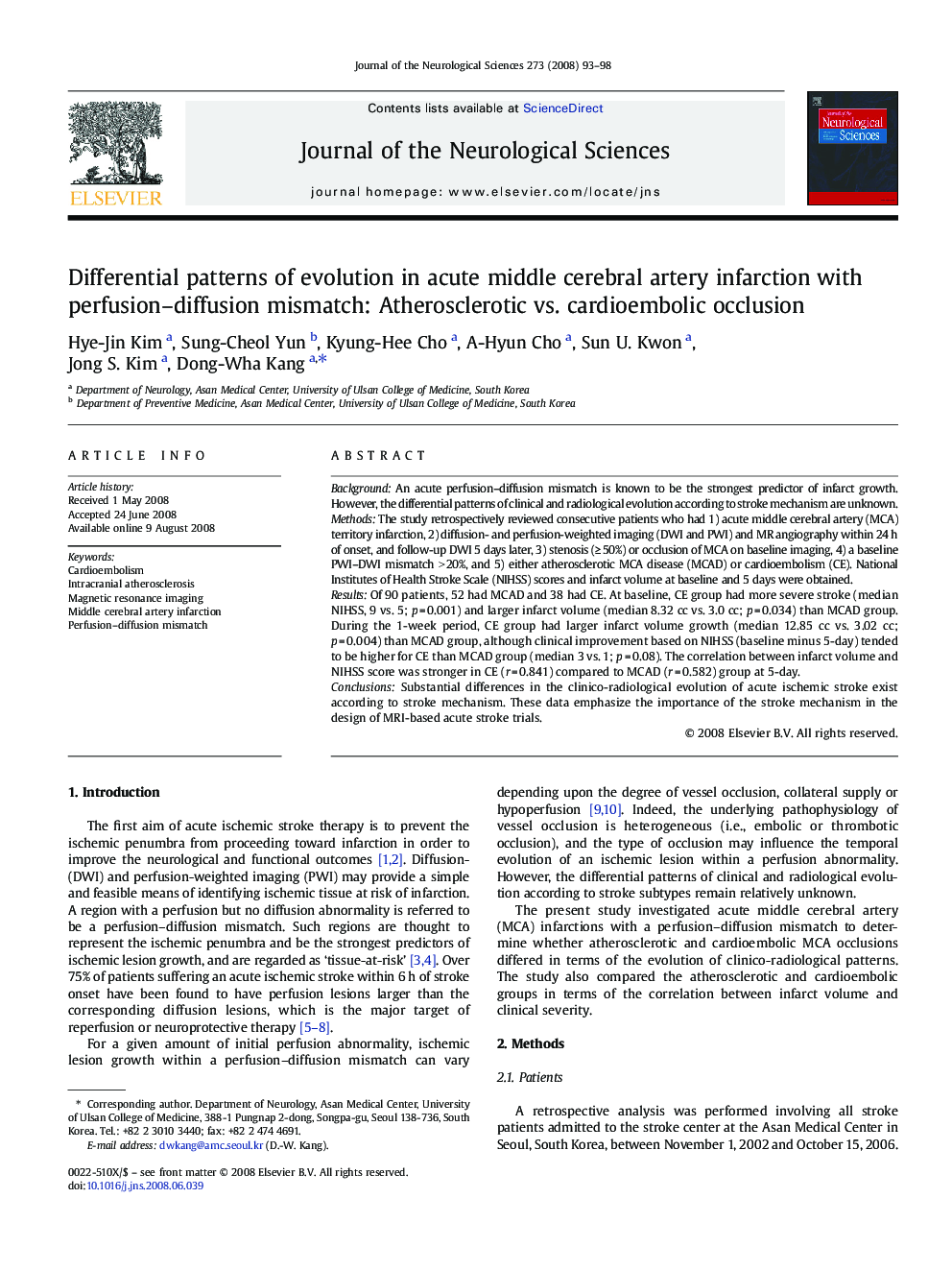| Article ID | Journal | Published Year | Pages | File Type |
|---|---|---|---|---|
| 1915708 | Journal of the Neurological Sciences | 2008 | 6 Pages |
BackgroundAn acute perfusion–diffusion mismatch is known to be the strongest predictor of infarct growth. However, the differential patterns of clinical and radiological evolution according to stroke mechanism are unknown.MethodsThe study retrospectively reviewed consecutive patients who had 1) acute middle cerebral artery (MCA) territory infarction, 2) diffusion- and perfusion-weighted imaging (DWI and PWI) and MR angiography within 24 h of onset, and follow-up DWI 5 days later, 3) stenosis (≥ 50%) or occlusion of MCA on baseline imaging, 4) a baseline PWI–DWI mismatch > 20%, and 5) either atherosclerotic MCA disease (MCAD) or cardioembolism (CE). National Institutes of Health Stroke Scale (NIHSS) scores and infarct volume at baseline and 5 days were obtained.ResultsOf 90 patients, 52 had MCAD and 38 had CE. At baseline, CE group had more severe stroke (median NIHSS, 9 vs. 5; p = 0.001) and larger infarct volume (median 8.32 cc vs. 3.0 cc; p = 0.034) than MCAD group. During the 1-week period, CE group had larger infarct volume growth (median 12.85 cc vs. 3.02 cc; p = 0.004) than MCAD group, although clinical improvement based on NIHSS (baseline minus 5-day) tended to be higher for CE than MCAD group (median 3 vs. 1; p = 0.08). The correlation between infarct volume and NIHSS score was stronger in CE (r = 0.841) compared to MCAD (r = 0.582) group at 5-day.ConclusionsSubstantial differences in the clinico-radiological evolution of acute ischemic stroke exist according to stroke mechanism. These data emphasize the importance of the stroke mechanism in the design of MRI-based acute stroke trials.
